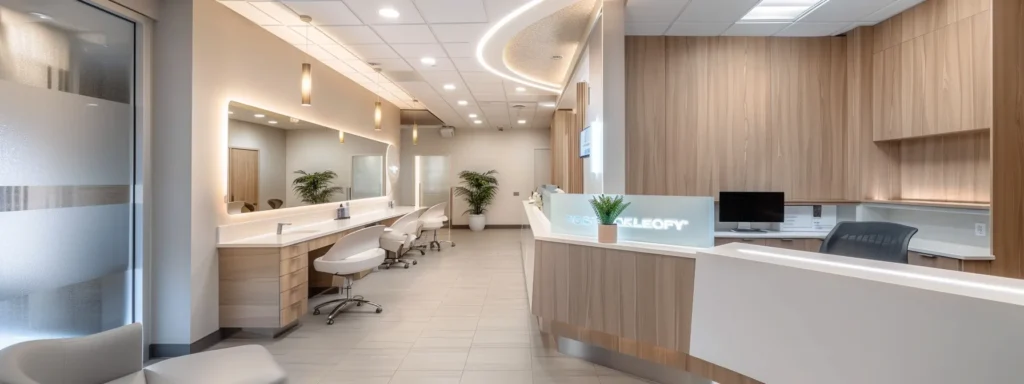Tackling pediatric obstructive sleep apnea (OSA) at its roots through early orthodontic intervention is crucial for a child’s well-being. This approach safeguards children’s health by addressing the interconnectedness of oral development and quality of sleep.
Understanding the critical role of oral health in sleep patterns is imperative. Crowded dental arches, for instance, may seem like a straightforward alignment issue but are indicative of broader health concerns. They can limit a child’s airway, leading to sleep disruptions that, over time, can have adverse effects on their overall development and day-to-day functioning.
Recognizing that these oral obstructions are more than dental anomalies is essential. They are often early-warning signs of OSA, which, if not managed promptly, can lead to chronic sleep deprivation. This condition can manifest in various ways, from reduced attention span and learning abilities to more severe health conditions. Prioritizing the prompt correction of these conditions ensures the healthy growth of a child and supports a more stable developmental path.
The Danger of Misdiagnosing Sleep-Related Symptoms
The main challenge in managing pediatric OSA is accurately diagnosing the condition. Precise recognition is critical to prevent the misinterpretation of symptoms and ensure appropriate intervention.
Symptoms such as irritability or hyperactivity are often mistakenly accepted as normal childhood behavior rather than indicators of sleep disturbances. Such an oversight may delay necessary treatment, leading to prolonged sleep difficulties and associated problems in behavior and health.
Understanding the subtle signs that parents and healthcare providers often miss helps ensure proper diagnosis:
• Behavioral Symptoms Often Overlooked: Irritability, hyperactivity, and mood swings may be signs of poor sleep quality rather than behavioral issues
• Physical Signs Requiring Expert Eye: Minor dental arch changes and facial development patterns that only trained orthodontists can detect
• Need for Comprehensive Assessment: Integrating orthodontic evaluations with medical assessments ensures nothing is missed
• Early Professional Recognition: Orthodontists play a key role in detecting nuanced signs that might include dental changes not readily apparent to untrained eyes
Recognizing these early indicators can make all the difference in a child’s well-being. When properly diagnosed, children can receive early and effective intervention, which prevents long-term complications and fosters healthier development.
Understanding How Jaw Development Affects Breathing
The significance of orthodontic health in the context of pediatric sleep apnea must be fully appreciated to prevent underestimation of its developmental impacts. Ignoring the relationship between craniofacial structures and airway health can lead to missed opportunities for early intervention.
There’s a need to recognize the influence of jaw structure on breathing. A narrow jaw restricts air passage during sleep, possibly resulting in disrupted sleep patterns which are central to healthy childhood development. Being proactive in expanding the jaw can have a transformative impact on sleep quality and, consequently, on a child’s daytime alertness and wellbeing.
The shape of the palate is another critical factor. A high-arched palate can similarly decrease airway space, leading to obstructive sleep apnea. Timely orthodontic interventions to correct palate shape are not just beneficial; they are essential in ensuring the child’s airway is clear during the crucial growing years. Correcting these issues early can lead to lifelong improvements in both sleep quality and overall health.
Common Warning Signs Parents Often Miss
Addressing the trend of oversight concerning early indicators of pediatric obstructive sleep apnea (OSA) is essential to prevent future airway complications. Education on the importance of these early signs is crucial for timely interventions.
Habitual snoring among children is not as harmless as it may appear. Snoring is a telltale sign of an obstructed airway. Without appropriate acknowledgment and action, this symptom can lead to misconceptions about its severity, leaving a child’s underlying sleep condition unaddressed.
Persistent mouth breathing is another significant red flag often dismissed as a harmless habit. It is a symptom of inadequate nasal airflow, which can contribute to developmental issues if left unchecked. Recognition and early treatment by orthodontic specialists can reverse these conditions, promoting better health outcomes for the child.
Incorporating regular screenings for these indicators into pediatric healthcare routines can spur early action:
• Snoring: An indicator of airway obstruction and potential OSA
• Mouth Breathing: Sign of impaired nasal function impacting development
• Restless Sleep: Often linked to breathing issues
• Attention Issues: Possible result of disrupted sleep cycles
Early detection can shift the trajectory of a child’s health. When parents and professionals understand the signs, children receive timely care that supports healthier development and avoids unnecessary suffering.
Building a Team Approach for Your Child’s Care
Constructing a collaborative intervention strategy is pivotal to addressing pediatric obstructive sleep apnea (OSA) effectively. This requires a united front across various healthcare disciplines to ensure a comprehensive treatment plan.
The first step involves forming a partnership among dental and medical professionals. Dentists, armed with their understanding of craniofacial structures, alongside pediatricians and sleep specialists, can form a robust network. This synergy is crucial for exchanging insights into the multifaceted nature of OSA and the child’s overall health.
It is imperative to create shared protocols that go beyond individual practices:
• Consistent Treatment Framework: Standardized protocols ensure uniform approach to early detection and intervention across all healthcare providers
• Improved Communication: Shared guidelines facilitate better information exchange between different specialists treating your child
• Educational Integration: Awareness programs teach both healthcare providers and parents about early orthodontic intervention importance
• Enhanced Care Quality: Unified approach ensures no aspect of your child’s sleep health is overlooked
When all parties work together, the child receives the most effective care possible. A collaborative team ensures no detail is overlooked, and treatment is aligned with long-term developmental goals.

When to Seek Professional Help for Your Child
Identifying the right moment to seek orthodontic intervention for potential pediatric OSA hinges on the awareness of specific symptoms that serve as decision criteria or escalation triggers.
The presence of audible symptoms such as regular snoring is a clear signal. It suggests that the child may be experiencing airway resistance during sleep, which can lead to disruptive sleep patterns. Parents noting these noises should view them not as harmless quirks but as alarm bells warranting professional consultations.
In addition to audible cues, physical symptoms such as daytime drowsiness should not be overlooked. Fatigue during the day in children suggests that sleep quality is compromised, potentially due to OSA. This symptom demands urgent attention to ensure children have the necessary energy for growth, learning, and play.
Morphological signs also play a critical role in the assessment. Traits like a narrow facial structure or visibly crowded teeth serve as evidence for potential orthodontic issues impacting breathing. These signs should be taken seriously and evaluated by a qualified orthodontic professional to determine if early intervention is necessary.
Specialized Care Designed for Growing Children
Optimizing the management of pediatric obstructive sleep apnea (OSA) requires specialized support resources and professional guidance tailored to young patients. This specialized care should focus on the particular needs of growing children as they undergo orthodontic treatments.
The provision of pediatric-specific dental devices is crucial. Mandibular advancement devices, for instance, are custom-made to fit the unique anatomy of a child’s mouth, gently modifying jaw positioning to enhance airway openness during sleep. This personalized approach not only improves comfort but ensures the effectiveness of the treatment.
Integration of these devices with advanced diagnostic technology marks another critical resource:
• Pediatric-Friendly Design: Devices crafted to fit the growing anatomy of children
• Imaging Technology: 3D scans guide precise appliance customization
• Custom Adjustments: Devices evolve with the child’s growth
• Ongoing Monitoring: Regular evaluations ensure optimal treatment response
Such a focused and responsive system ensures that the treatment adapts to the child’s needs. With a personalized plan, providers can support both immediate improvement and future wellness.
Building Healthy Habits to Prevent Sleep Problems
Establishing preventive measures and best practices is fundamental in safeguarding children from obstructive sleep apnea (OSA). Encouraging healthy habits early on can significantly reduce the risk of developing OSA.
Encouraging nasal breathing is a cornerstone of preventing OSA. Nasal breathing filters and humidifies the air entering the lungs and supports proper oral and facial development. By teaching children the importance of breathing through their noses rather than their mouths, parents and caregivers can help maintain an open and clear airway during sleep.
Nutrition and lifestyle also have a substantial impact on craniofacial development:
• Encourage Healthy Eating: Nutrient-dense foods support overall growth and development
• Promote Chewing Activities: Foods that require chewing strengthen jaw muscles
• Prioritize Nasal Breathing: Support proper respiratory patterns and oral structure
• Schedule Regular Screenings: Orthodontic evaluations catch airway issues early
These daily habits promote better sleep and healthy development. When combined with proactive orthodontic oversight, they become powerful tools in supporting a child’s long-term health.
Protecting Your Child’s Future Through Early Action
Early orthodontic intervention serves as a decisive measure against pediatric sleep apnea, shaping a healthier developmental trajectory for children. This strategic approach aligns with the overarching goal of securing a child’s health and well-being.
In pediatric care, preventive orthodontics plays a pivotal role. By addressing dental and facial irregularities early on, it’s possible to correct airway obstructions that contribute to sleep apnea. This proactive measure can spare a child from the disruptive consequences of poor sleep, laying a foundation for robust growth and development.
Simple orthodontic practices can have profound effects:
• Expand Dental Arches: Opens airways and supports nasal breathing
• Correct Jaw Position: Promotes better airflow during sleep
• Reduce Snoring: Improves sleep quality and daytime alertness
• Encourage Healthy Growth: Supports cognitive, emotional, and physical development
With timely action, these treatments become less invasive and more effective. Taking the first step toward early orthodontic care can provide a child with life-changing results, setting the stage for lifelong health and confidence.
Don’t let uncertainty hold you back. Schedule a consultation today and start building a thriving dental sleep practice with Ohl Consulting!
Ohl Practice Management & Consulting
connect@ohlpracticeconsulting.com
Frequently Asked Questions
How do orthodontic treatments prevent sleep apnea in children?
By correcting oral structures like overcrowded teeth and narrow arches early, orthodontic treatments help keep a child’s airway open during sleep, reducing the risk and severity of sleep apnea.
When should I seek orthodontic advice for my child’s sleep issues?
If your child frequently snores, breathes through their mouth, or shows signs of disrupted sleep, it’s wise to consult an orthodontist. Early evaluation and intervention can be key to effective treatment.
What are the signs of sleep apnea in children I should look out for?
Keep an eye out for persistent snoring, difficulty breathing during sleep, restless nights, or daytime drowsiness. These symptoms could indicate sleep apnea and warrant a professional orthodontic assessment.





